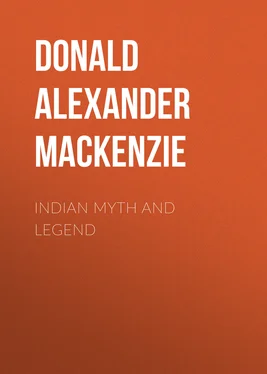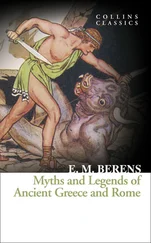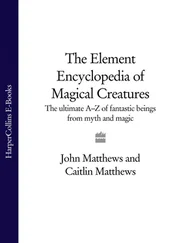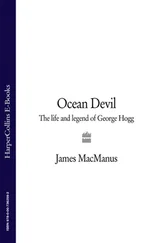Donald Alexander Mackenzie - Indian Myth and Legend
Здесь есть возможность читать онлайн «Donald Alexander Mackenzie - Indian Myth and Legend» — ознакомительный отрывок электронной книги совершенно бесплатно, а после прочтения отрывка купить полную версию. В некоторых случаях можно слушать аудио, скачать через торрент в формате fb2 и присутствует краткое содержание. Жанр: foreign_prose, foreign_religion, Философия, Мифы. Легенды. Эпос, foreign_psychology, foreign_antique, на английском языке. Описание произведения, (предисловие) а так же отзывы посетителей доступны на портале библиотеки ЛибКат.
- Название:Indian Myth and Legend
- Автор:
- Жанр:
- Год:неизвестен
- ISBN:нет данных
- Рейтинг книги:4 / 5. Голосов: 1
-
Избранное:Добавить в избранное
- Отзывы:
-
Ваша оценка:
- 80
- 1
- 2
- 3
- 4
- 5
Indian Myth and Legend: краткое содержание, описание и аннотация
Предлагаем к чтению аннотацию, описание, краткое содержание или предисловие (зависит от того, что написал сам автор книги «Indian Myth and Legend»). Если вы не нашли необходимую информацию о книге — напишите в комментариях, мы постараемся отыскать её.
Indian Myth and Legend — читать онлайн ознакомительный отрывок
Ниже представлен текст книги, разбитый по страницам. Система сохранения места последней прочитанной страницы, позволяет с удобством читать онлайн бесплатно книгу «Indian Myth and Legend», без необходимости каждый раз заново искать на чём Вы остановились. Поставьте закладку, и сможете в любой момент перейти на страницу, на которой закончили чтение.
Интервал:
Закладка:
The Aryan controversy had its origin at the close of the eighteenth century, when that distinguished Oriental scholar Sir William Jones, who acted for a period as a judge of the Supreme Court in Bengal, drew attention to the remarkable resemblances between the Sanskrit, Greek, Latin, German, and Celtic languages. In 1808, Schlegel published his Language and Wisdom of the Hindus , and urged the theory that India was the home of an ancestral race and a group of languages that were progenitors of various European ones. Other scholars subsequently favoured Zend, the language of Persia, and transferred the “racial beehive” to that country; rival claims were afterwards set up for Asia Minor and the Iranian plateau.
The science of Comparative Philology was a direct product of these early controversies; it was established in the “thirties” when Bopp published his Comparative Grammar in which a new term, having a racial significance, was invented: he grouped all European languages, except Basque, Magyar, Turkish, and Finnish, as “Indo-Germanic”. After the study of Sanskrit literature revealed, however, that the Aryans occupied but a small part of India when their sacred hymns, the Vedas, were composed, the cradle of the Aryan race was shifted to some uncertain area beyond the Himalayan mountains.
Max Müller, the distinguished Sanskrit authority, who in the words of an Indian scholar “devoted his lifetime to the elucidation of the learning, literature, and religion of ancient India”, 1 1 Romesh C. Dutt's Ramáyana dedication.
abandoned Bopp's patriotic term “Indo-Germanic” and adopted Aryan, which he founded on the Sanskrit racial designation “Arya”. At first he accepted the theory of an Aryan race and especially of an Aryan civilization which originated on the Central Asian plateau, but, as will be seen, he subsequently modified his views in this regard.
A new theory regarding the Aryans, who are now more commonly referred to as Indo-Europeans, was strongly advocated in 1851 and later by Dr. Robert Gordon Latham, who devoted many years to the study of ethnology and philology. He argued that as the major part of the peoples speaking Indo-European tongues was found in Europe, the cradle of the race might, after all, be transferred westward. This theory was supported by the fact (among others) that the Lithuanian language was no less archaic than Sanskrit.
The European hypothesis found in time many able supporters, and the advocates of rival Teutonic and Celtic claims waxed eloquent and heated over the exact location of the Aryan homeland. An industrious search was meanwhile conducted for words common to all Aryan languages which described the natural features of the racial “cradle”. This work of reconstruction was certainly not lacking in picturesque results, for attractive visions were presented of Aryan Arcadias in which the simple and contemplative ancestors of many bitter controversialists dwelt together in exemplary unity and peace. The question of location might remain unsettled, but it was generally agreed that the ancient people were surrounded by cows, sheep, and goats; sometimes they rode their horses or yoked them in rough rumbling carts, and sometimes they ate them. No asses were admitted to the fold because of their decided partiality for Central Asian plains, which seemed quite reasonable. Trouble was occasionally caused by wolves and bears, or, mayhap, a stray lion, but these and other worries associated with the simple life might be compensated for by the fact that the primitive people, as one writer 2 2 Rydberg's Teutonic Mythology .
put it, “understood the art of drinking”. Mead, brewed from honey, was found to be “dear to the hearts of the ancient Aryans”; had the Brahman ever forgotten his “madhu”, the Welshman his “medhu”, or the Lithuanian his “medus”? Problems arose regarding the ancients' knowledge of trees: it was found that “bhaga” was applied indifferently by the family groups to the beech and the oak, and more than one ingenious explanation was suggested to account for this apparent discrepancy. Then, suddenly, Professor Max Müller swept into the background the rival Aryan homeland pictures, pointing out the while that it is “almost impossible to discover any animal or any plant that is peculiar to the north of Europe and is not found sporadically in Asia also”. Destructive criticism proceeded apace, until now nothing has been left to us of the ancestral Arcadia but “air, water, heat and cold”. In his review of the widely accepted philological “evidence” regarding the Aryan homeland, Max Müller declared it to be so pliant that it was possible “to make out a more or less plausible case for any part of the world”. The advanced group of philologists held, indeed, that no racial centre could be located. Ultimately “Delbrück went so far,” says Professor Ripley, “as to deny that any single parent language ever existed in fact”. 3 3 The Races of Europe , W. Z. Ripley, p. 481.
Meanwhile ethnologists and archæologists were engaged accumulating important data. It was found that Europe had been invaded at the close of the Stone Age by a broad-headed (brachycephalic) people, who brought no culture and even retarded the growth of civilization in their areas of settlement. A new problem was thus presented: were the Aryans a brachycephalic (broad-headed) or a dolichocephalic (long-headed) people? Its solution was rendered all the more difficult when it was found that living representatives of both racial types were peoples of Aryan speech. The idea that skull shapes, which are associated with other distinct physical characteristics, were due to habits of life and the quality of food which had to be masticated, was in time advanced to discredit new methods of ethnic research, but it has since been thoroughly disproved. In many ancient graves are found skulls which do not differ from those of modern men and women, living under different conditions and eating different food.
Patriotic controversialists were not awanting again in dealing with the problem of varying skull shapes. French scientists, for instance, have identified the “broad heads”, now generally known as the Alpine race, with the ubiquitous Celts, but as present-day Hindus are mainly “long heads”, the Aryan racial connection here suggested remains obscure. A clue to the mystery was sought for in Asia Minor, but no satisfactory result could be obtained there to support philological theories, because the Armenians, who are “broad heads”, and their enemies and neighbours the Kurds, who are “long heads”, are both peoples of Aryan speech. A scornful scientist has dismissed as a “prehistoric romance”, the theory that the fair Scandinavian “long heads” are identical with the brunet “long heads” of India. Both the Celtic (Alpine) and Indo-Germanic racial theories are as inconclusive as they are diametrically in opposition.
The science of philology, which, at its inception, “dazzled and silenced all”, has been proved to be no safe guide in racial matters. We must avoid, as Professor Ripley says, “the error of confusing community of language with identity of race. Nationality may often follow linguistic boundaries, but race bears no necessary relation whatever to them.” 4 4 The Races of Europe , W. Z. Ripley, p. 17.
By way of illustration, it may be pointed out in this connection that English is spoken at the present day by, among others, the Hong Kong Chinamen, the American Red Indians and negroes, by the natives of Ireland, Wales, Cornwall, and the Scottish Highlands, besides the descendants of the ancient Britons, the Jutes, the Angles, the Saxons, the Norsemen, the Danes, and the Normans in England, but all these peoples cannot be classified in the racial sense simply as Englishmen. Similarly, the varied types of humanity who are Aryan in speech cannot all be regarded as representatives of the “Aryan race”, that is, if we accept the theory of an “Aryan race”, which Virchow, by the way, has characterized as “a pure fiction”.
Читать дальшеИнтервал:
Закладка:
Похожие книги на «Indian Myth and Legend»
Представляем Вашему вниманию похожие книги на «Indian Myth and Legend» списком для выбора. Мы отобрали схожую по названию и смыслу литературу в надежде предоставить читателям больше вариантов отыскать новые, интересные, ещё непрочитанные произведения.
Обсуждение, отзывы о книге «Indian Myth and Legend» и просто собственные мнения читателей. Оставьте ваши комментарии, напишите, что Вы думаете о произведении, его смысле или главных героях. Укажите что конкретно понравилось, а что нет, и почему Вы так считаете.












